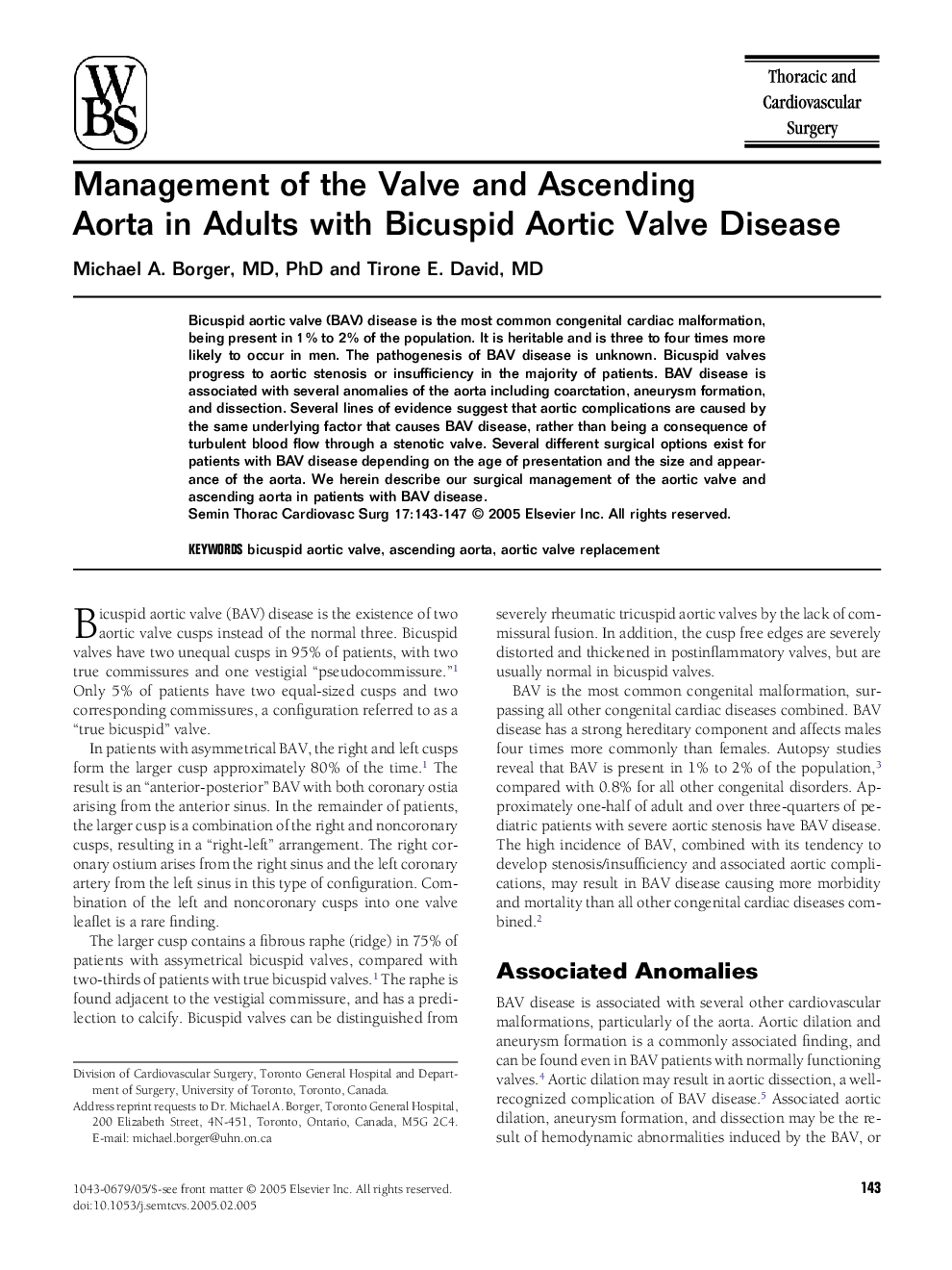| Article ID | Journal | Published Year | Pages | File Type |
|---|---|---|---|---|
| 9184340 | Seminars in Thoracic and Cardiovascular Surgery | 2005 | 5 Pages |
Abstract
Bicuspid aortic valve (BAV) disease is the most common congenital cardiac malformation, being present in 1% to 2% of the population. It is heritable and is three to four times more likely to occur in men. The pathogenesis of BAV disease is unknown. Bicuspid valves progress to aortic stenosis or insufficiency in the majority of patients. BAV disease is associated with several anomalies of the aorta including coarctation, aneurysm formation, and dissection. Several lines of evidence suggest that aortic complications are caused by the same underlying factor that causes BAV disease, rather than being a consequence of turbulent blood flow through a stenotic valve. Several different surgical options exist for patients with BAV disease depending on the age of presentation and the size and appearance of the aorta. We herein describe our surgical management of the aortic valve and ascending aorta in patients with BAV disease.
Related Topics
Health Sciences
Medicine and Dentistry
Cardiology and Cardiovascular Medicine
Authors
Michael A. MD, PhD, Tirone E. MD,
